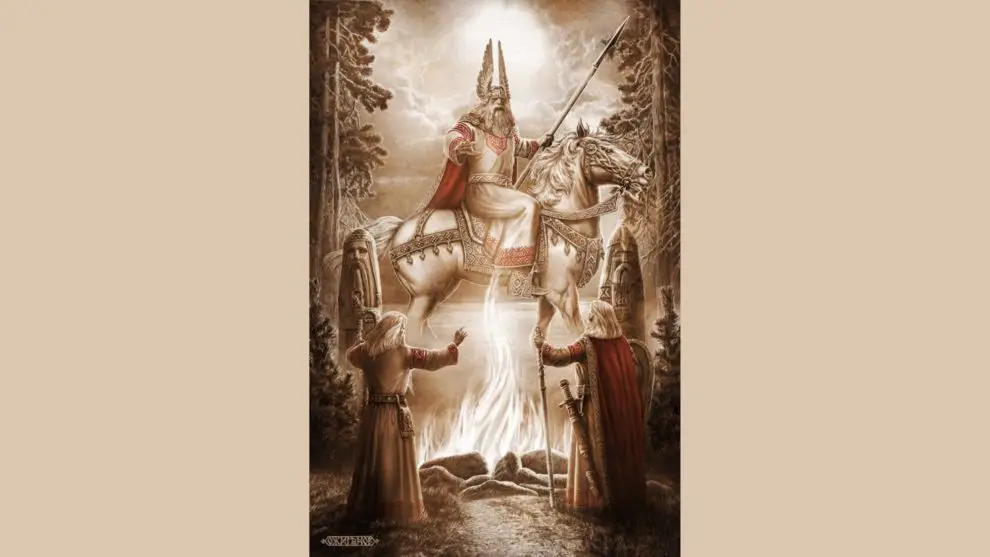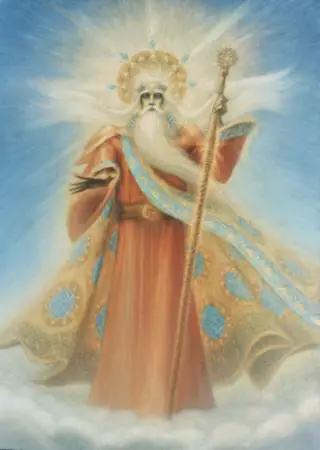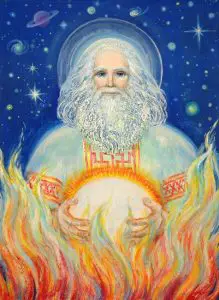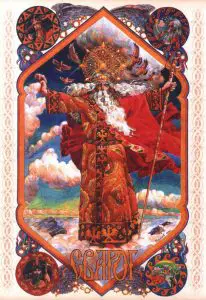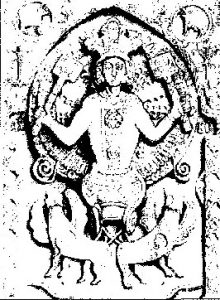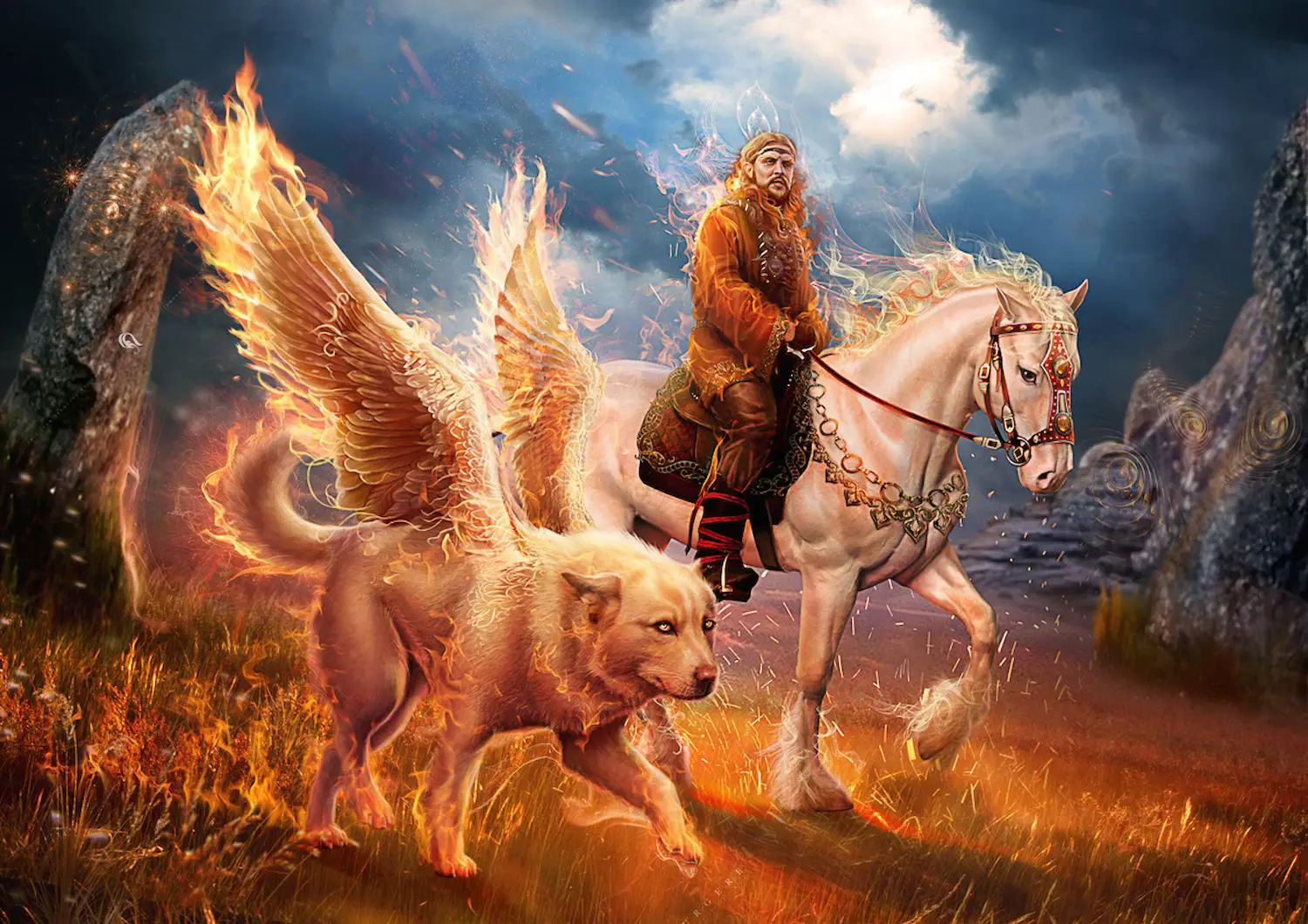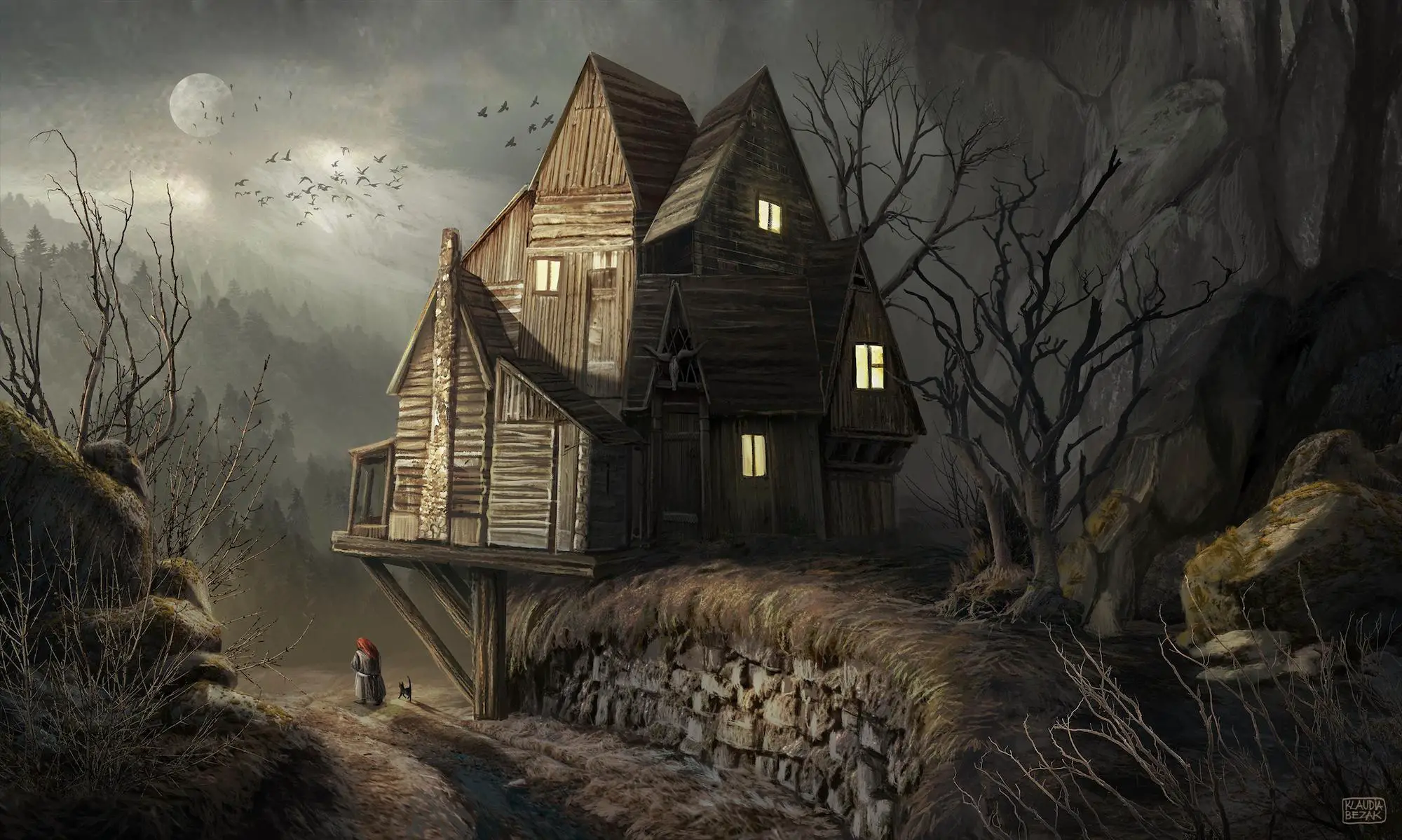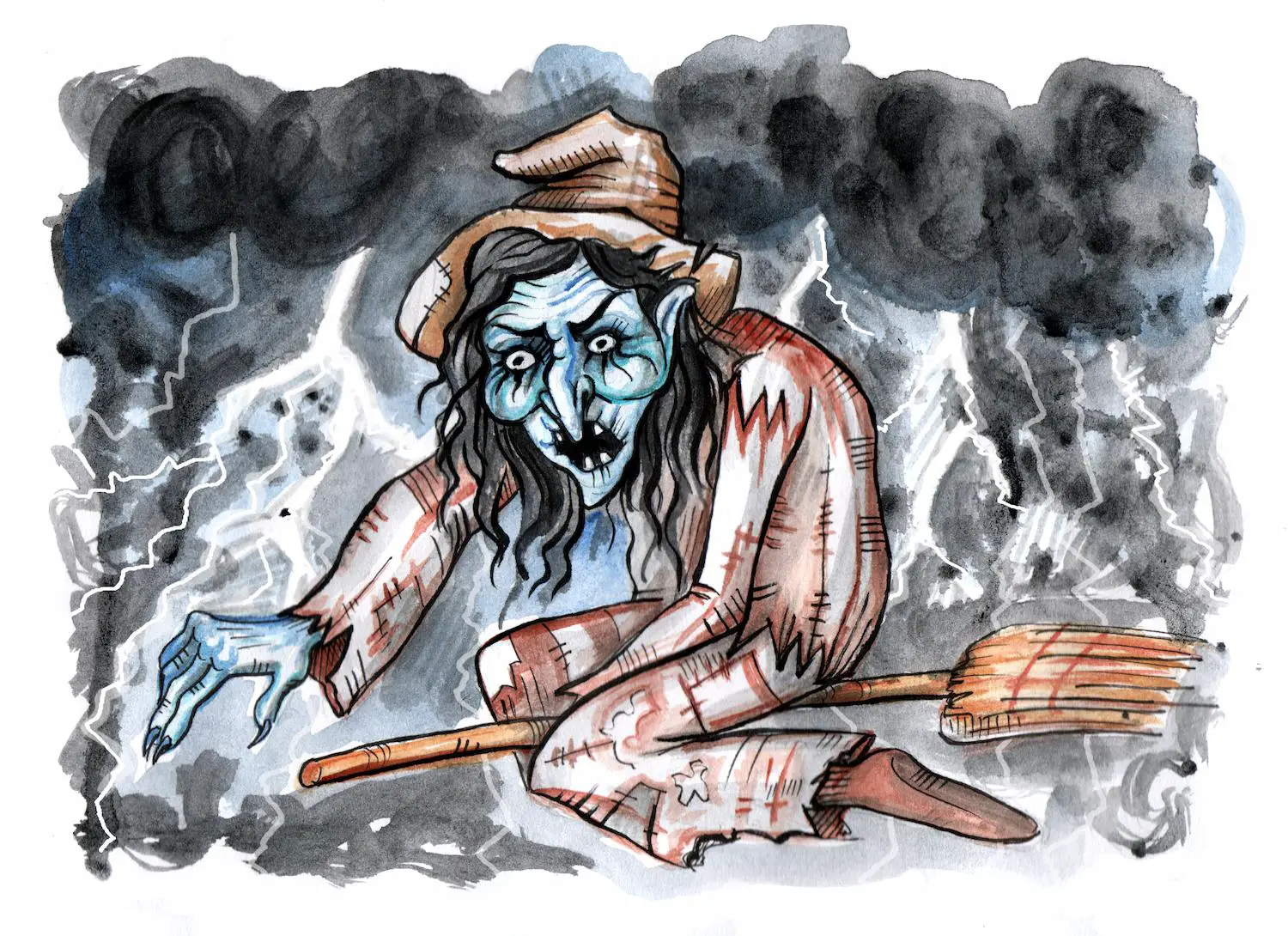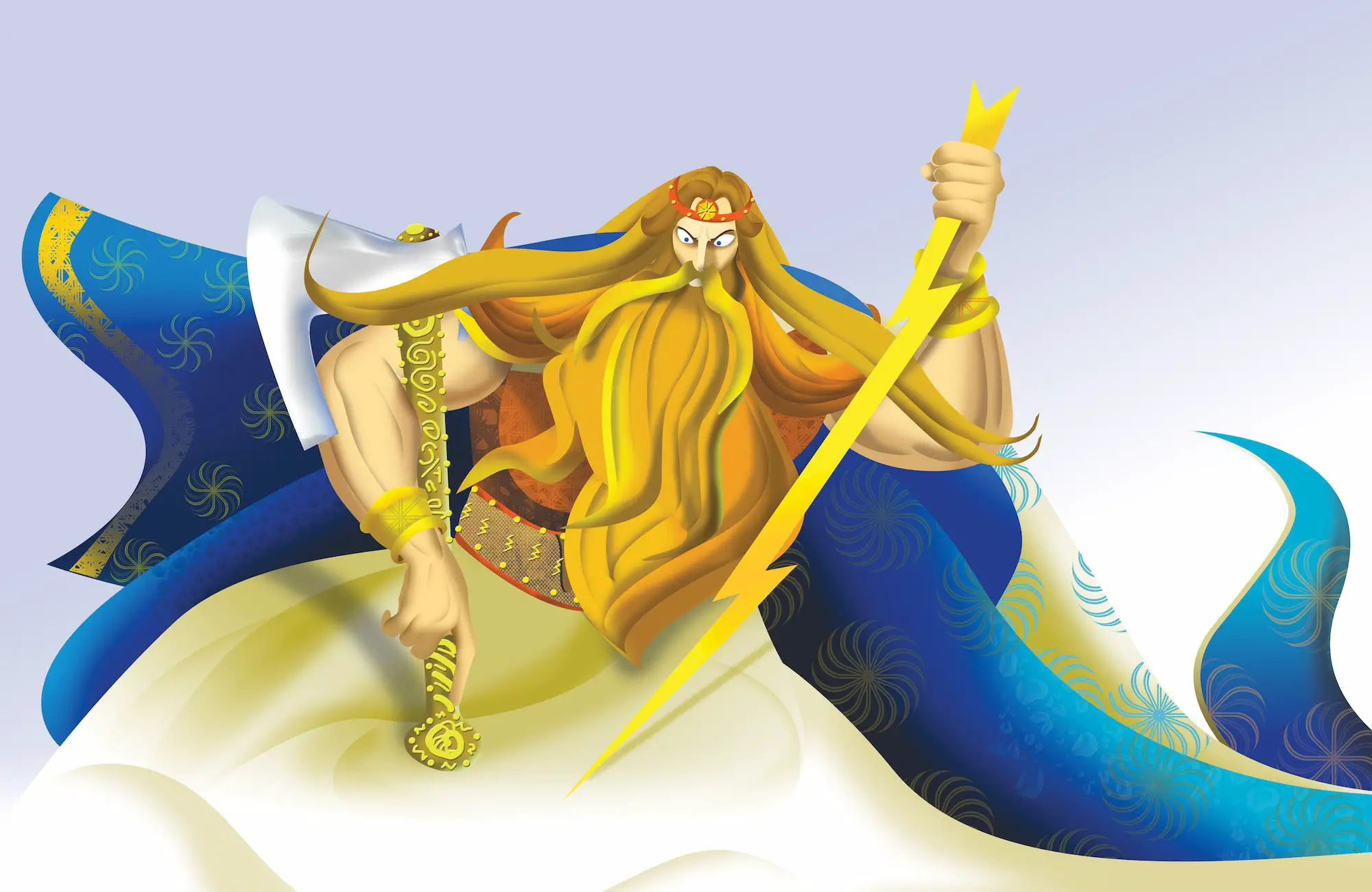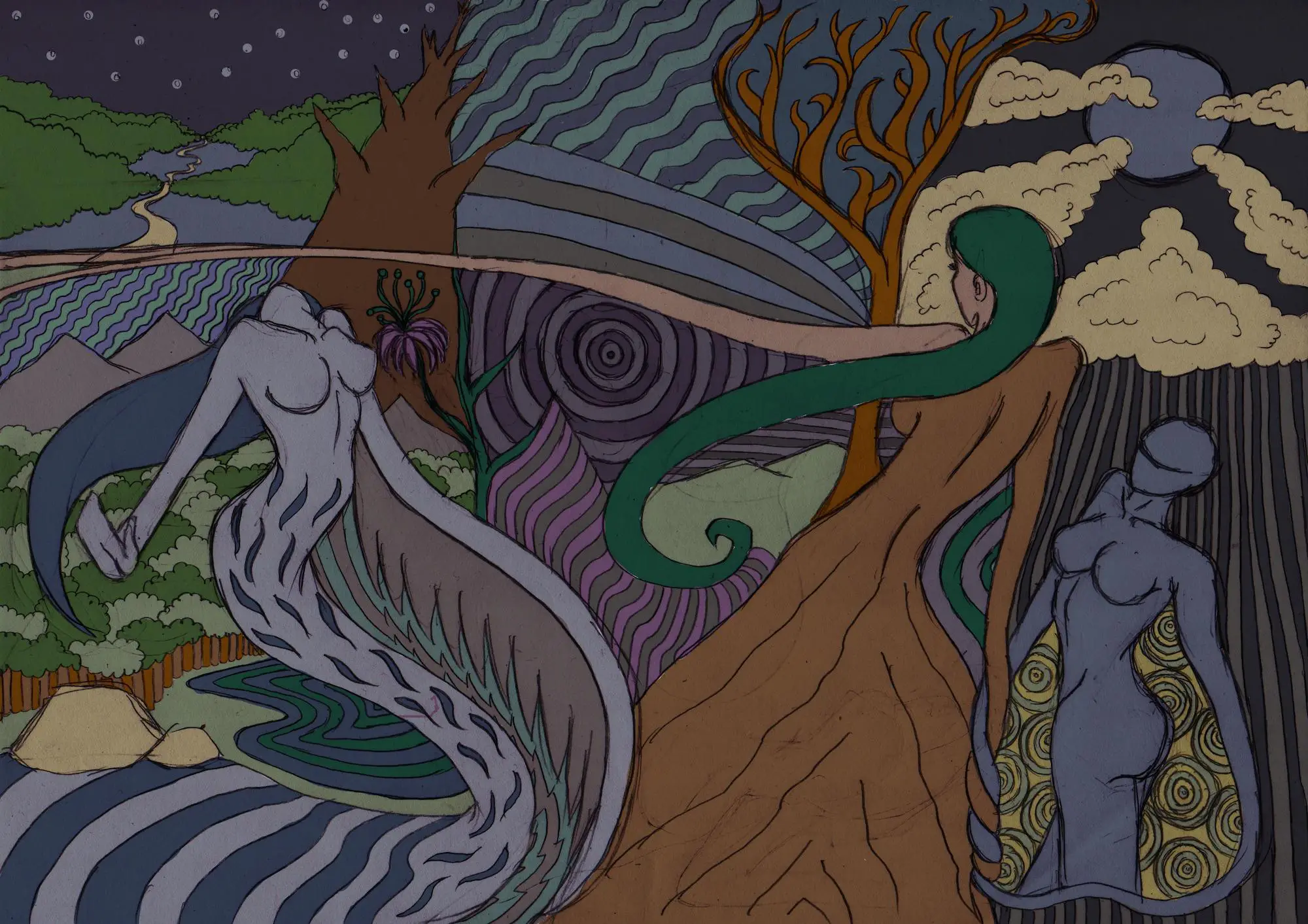Svarog was revered by the Slavs as the great god of blacksmiths, law and fire, similar to that of Hephaestus of the Greek pantheon.
The origin of Svarog’s name can be traced to the language of Indo-European people, that is to say Sanskrit. Although an exact link has yet to established, some theories suggest the name comes from the Sanskrit word ‘Svarga’ meaning the sky or heaven.
Another theory suggests Svarog’s name came from the Indo-Aryan word ‘svar’ meaning the sun, although this theory is discounted by some as the Slavs had possessed a different word for the sun at the time.
Table of Contents
Svarog: Historical Sources
The details of Svarog are few, although the Hypatian Codex (a chronicle which itself is a compilation of several documents from the Ipatiev monastery, regarded as one of the most important written accounts of Kievan Rus) makes a rare mention of him, specifically in a translated myth.
The myth, which originally takes place in Egypt and mentions Greek deities, had it’s setting and characters changed during translation in order to have more appeal to those reading it. Translated into English, parts of that myth read:
“(Then) began his reign Feosta (Hephaestus), whom the Egyptians called Svarog … during his rule, from the heavens fell the smith’s prongs and weapons were forged for the first time; before that, (people) fought with clubs and stones. Feosta also commanded the women that they should have only a single husband… and that is why Egyptians called him Svarog… After him ruled his son, his name was the Sun, and they called him Dažbog… Sun tzar, son of Svarog, this is Dazhbog.”
Since this is not an actual Slavic myth per se, historians are uncertain as to how much of the myth is indeed applicable to Slavic pagan beliefs, specifically the sons of Svarog.
Sons of Svarog
As mentioned above, Svarog had fathered Dazhbog as well as several other gods, these being Perun, Svarozivic, Stribog, Semargl, and Radogost.
It is generally believed that Dazhbog and Svarozivic are the same god, as the book of Kolyada mentions Dazhbog’s birth during the striking of the Alatyr-stone, but Svarozivic, who has been attributed to nearly the same aspects as Dazhbog was not mentioned.
This belief is furthered by the idea that ‘Svarozivic’, which was used to describe the sons of Svarog in the Book of Kolyada, may have just been a word meaning ‘of Svarog’.
Svarog’s Creation of the Mortal World
The birth of Svarog’s sons is described in the Book of Kolyada’s myth of the creation of the mortal world, one of several myths involving Svarog. The myth states that a great rock, the Alatyr-stone, was brought from the depths of the ocean by a great duck. The rock possessed great magical powers and for this the duck had wanted to hide the stone in it’s beak. Upon finding the duck, Svarog uttered a phrase which caused the stone to grow in size and eventually become too large for the bird to carry.
Soon the stone had become a great mountain and later a center of knowledge of the tales of the gods (vedas) and a mediator between god and man. But upon seeing this, Svarog had decided that no man must know of the stone. With this, he struck the stone with his hammer, but he was only successful in creating sparks. With these sparks, the ratichi (celestial warriors, that is to say gods) were born, this included Semargl, the great god of fire. Because of this, the mighty winds rose, thus creating Stribog, the god of the wind.
After this, the duck who had previously carried the stone conceived a great black snake. The snake, sent to end the stone, crept up to it and struck it to the ground. the stone fell from the heavens and eventually came to be in the land of the mortals (the exact spot was said to be Mount Elbrus in the Caucasus mountains).
The impact of the drop had sent black sparks across the world, with this the dark forces of the world were born. Now Semargl had begun to fight with the snake and it’s troops, but he was outmatched and soon the sun had been blotted out by the snake and the world had been overrun by it’s minions. Defeated, Semargl ascended to the heavenly smithy, followed closely by the great snake. Seeing this, Svarog grabbed the snake’s tongue and tamed it so that it may plow the fields of the earth, whilst sending it’s minions to the underworld.
Following this great victory, a half-horse by the name of Kitovras (Known to the Greeks as Chiron) constructed a temple around the stone with the most sacred area in the temple, an altar, being the place where Svarog spoke with man. The myth mentions it was here where Svarog taught man how to make food with milk and cheese curds, which is why the Slavs considered such a meal was a gift from the gods. Since then, this stone has been sometimes attributed to Svarog and in this way he is seen as the creator of the mortal world.
Svarga
Meanwhile, Svarog had also created the blue Svarga, a land in the heavens where it was said the ancestors of the Slavs would live after death (which is contradictory considering the fact another myth states the souls of the dead would go to the land of Nav, an underworld of sorts).
It is a possibility that these two concepts were influenced by separate mythologies, that is to say the Norse and Greek ones, respectively. It is not unlikely, as this conflict of mythologies had been seen before in other parts of Slavic mythology. It was believed the stars of the night sky were the eyes of the grandfathers, who look down from the Blue Svarga upon the Slavic people’s earthly affairs.
Svarog, unlike Veles, does not create the material world with words or magic, but rather his hands. He cared about the Slavs, giving them fire for the cold and to cook food as well as the Sun-Ra (sun) which later became the word for joy (Radost). He also came to the earth to plow the fields and gave the Slavs several gifts.
The first, an axe of which to defend their native lands from enemies and the second being a bowl to prepare sacred drinks and the third being tongs of which to create forged weaponry. Finally, his last and possibly most important contribution was the creation of the two circles of time, one of the ground and one of space.
Tale of Svarog and Dy
The Book of Kolyada makes one final large mention of Svarog, this being the tale of Svarog and Dy.
As Svarog ate a feast, several badly-beaten warriors entered the hall and claimed that had been attacked by the Volot-giants of Dy, god of the sky and thunder under the command of his son, Churila. Angered by this, Svarog gathered the heavenly army and marched towards the kingdom of Dy in the Ural mountains. Upon arrival, Svarog’s army defeated the soldiers of Dy and sealed his royal subjects below the mountains. After this, Svarog and his sons decided to hold a victory feast within the palace of Dy.
Begging for forgiveness, Churila had offered expensive gold and jewels to Svarog, convincing him to take Churila into service. Like the rest of Dy’s children, Churila was very handsome, this caught the eye of Lada, who began to remark on his looks. To this Svarog replied:
“As Dy dims his eyes, so the night dims reason..get thee away from the table, Churila!”.
After this, Churila began to serve Tarusa, wife to the god of prayer, Barmas.
Svarog’s Appearance
Depiction-wise, it is hard to find a true and definite idea of what the Slavs imagined him to be. One source says Svarog was seen as a flying fire-breathing dragon, this idea was later set aside as pagan beliefs developed.
Most commonly, Svarog was thought to be part of the trinity of creator gods, Triglav, among Dazhbog and Perun.
The Slavic myth describes Svarog as a god that used his hands as his main power (instead of his divine abilities). Thus, he was considered the patron of labor.
In the ancient Slavic imagery he was sometimes represented as an old man with long grey hair but other versions also depicted him as a strong warrior and a protector of the family [1].
He always carried a hammer (that was his tool and weapon and all he needed for a battle or any laborious task).
The God With Four Faces
Some legends described Svarog as a deity with four faces, each face representing one side of the earthly world.
This characteristic was also prescribed to the gods Triglav, Veles, and Dazbog as some legends also described them as polycephalous creatures.
Amulets and Talismans of Svarog
Pagan Slavs created material symbols of deities in order to provide themselves protection from misfortune and bad luck.
These could be applied on weapons or armors, but were also drawn on jewelry like rings, pendants, and necklaces worn by both men and women.
The Cross of Svarog
The Cross of Svarog was an eight-pointed star and each ray of the star was divided in two, i.e. the visible, earthly, and the invisible, (under) world that was believed to be equally important for a person’s life. The Cross was supposed to give wisdom to the wearer.
The Hammer of Svarog
This amulet was, in fact, a piece of jewelry that was made in the shape of a hammer, symbolizing power and strength.
Slavic ancestors believed that the hammer symbolizes the celestial forge that provided warmth, light, and bounty.
Kolovrat
Kolovrat is a solar symbol that is connected to this god. The symbol contains rays that are positioned in the direction of the movement of the Sun. Therefore, it was interpreted as something that reflects balance and the natural harmonious flow of time.
People wore Kolovrat as an amulet in order to get goodwill and calmness that would guide them through the cycle of changes in life.
The Etymology of Svarog in Slavic Mythology
Svarog god is also known and referred to as Svarožič, Zuarasici, Zuarasiz, Сварогъ (in the historical compendium “Hypatian Codex”). Svarog is a deity whose name is mainly associated with the Sanskrit word “svar”, translated as “heaven”.
The Vedic tradition mentions the figure of Svarog as Indra, a guardian deity in Buddhism and the king of the highest heaven.
In the Anglo-Saxon tradition, Svarog appears in the form of “sweorc”, the ruler of heaven.
The Baltic German historian Alexander Bruckner even connected several Polish toponyms such as Swarocin, Swariz, Swaruzewo, Swarzen and Swarzedz with Svarog (though this was never officially confirmed).
The name of Svarog was also the basis for the creation of the diminutives Svarožič and Swarożyc with the suffixes “-yc” and “ič”
The ancient Slavs were obviously honoring a deity that was named Svarog but, reportedly, the South Slavs are more familiar with the god Dažbog (a solar deity). At the same time, in Russia, there is the cult of the god Perun (instead of Svarog).
The Bottom Line
As Christianity began to take hold in Eastern Europe, the idea of Svarog was replaced by Saint Damian, Saint Cosmas and Michael the Archangel. Although paganism was being replaced by Christianity, many were reluctant to give up their old traditions which is why so many attributes of the pagan gods were given to Biblical characters or saints.
When assessed, it would seem that the concept of Svarog, and indeed his attribution of being a lawmaker and blacksmith came out of the Slavic people’s entrance into an iron age, which brought about advances in weaponry and agriculture.
The various tribes scattered along the land had seen Svarog as the bringer of these advancements, which would explain why he was first mentioned when Slavic tribes developed agriculture around 800-600 BC.
Sources
- https://viking-workshop.com/blog/slavic-god-svarog/







